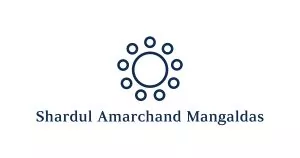- in United States
- within Insolvency/Bankruptcy/Re-Structuring, Antitrust/Competition Law and Energy and Natural Resources topic(s)
- with readers working within the Property and Law Firm industries
Vidarbha Industries Power Limited v. Axis Bank Limited
The Insolvency and Bankruptcy Code, 2016 (“IBC”) is one of the most monumental legal reforms for Indian economy as it enabled prompt initiation of insolvency proceedings to achieve best possible economic outcome as per the market forces to prevent erosion of value of assets. IBC marked a change in legislative policy which incentivised early detection of stress in a business by making “default” by debtor as threshold for initiation of reconstruction process whereas the erstwhile regime had “inability to pay debts” as a yardstick to initiate winding up of a debtor. The legislative intent as exhibited in reports of Bankruptcy Law Reform Committee Report, 2015 (“BLRC Report”) and legislative debates, clearly shows that legislature intended admission of a debtor to the corporate insolvency resolution process under IBC (“CIR Process”) before it turns sick and unviable. Judiciary also took cognisance of the legislative intent and held that debt and evidence of default are the objective triggers to the CIR Process in landmark judgments of Innoventive Industries and Swiss Ribbons1. A recent judgment of the Supreme Court in Vidarbha Industries2 has committed volte face to existing jurisprudence of IBC and has held under Section 7(5)(a) of IBC, NCLT has discretionary powers in making an assessment for referral of a debtor to CIR Process irrespective of its evidence of debt & default.
BRIEF FACTS AND THE SUPREME COURT JUDGMENT
Vidarbha Industries Power Limited (“Corporate Debtor”), a power generation company defaulted on its payment obligations under credit facilities availed from a consortium of six banks led by Axis Bank Limited. In view of such defaults, Axis Bank filed an application under section 7 of IBC for the commencement of CIR Process in respect of its debt to the tune of INR 533 crores.
The Corporate Debtor filed an interim application seeking stay of further proceedings in light of various proceedings pending before Maharashtra Electricity Regulatory Commission (“MERC”), Appellate Tribunal for Electricity (“APTEL”) and the Supreme Court. The most substantial of all the pending proceedings was an appeal filed by MERC against APTEL order before the Supreme Court whereby a sum of INR 1,730 Crores is due to the Corporate Debtor on account of revision of tariff caused by rise in price of coal wef. FY 2015 onwards.3 Notably, the debt or occurrence of default was not disputed by the Corporate Debtor.
Relying on the threshold requirements for initiation of CIR Process provided by statute, i.e., existence of debt and evidence of default (commonly known as twin test), upheld by the Supreme Court in Swiss Ribbon and Innoventive Industries, the NCLT dismissed the interim application filed by the Corporate Debtor holding that no external reason triggering default by a corporate debtor would be relevant if the threshold of twin test is satisfied.
An appeal before the NCLAT was also dismissed on ground that if debt and default are not disputed, external factors like financial difficulties and liquidity problems faced by the Corporate Debtor do not have any bearing on the commencement of the CIR Process. The Corporate Debtor assailed this order of the NCLAT before the SC.
The Supreme Court vide its order dated 12 July 2022 held that Section 7(5)(a) of IBC, confers discretionary power on the Adjudicating Authority to admit an application of a Financial Creditor (“FC”) under section 7 of the IBC for initiation of CIR Process and that factors relating to business and liquidity of the borrower are not external / anterior factors qua admission of Corporate Debtor into CIR Process.
The Supreme Court noted the language of Section 7(5)(a) in comparison to Section 9(5) of the IBC and observed the use of word “may” in Section 7(5)(a) as against “shall” in Section 9(5) to arrive at the conclusion that fulfilment of twin test requirements merely give right to FC for initiation of CIR Process and do not mandatorily necessitate admission of Corporate Debtor for CIR Process. The Supreme Court held that there is no fixed time limit within which an application under section 7 has to be admitted.
The Supreme Court further held that the operational creditors and financial creditors have been consciously differentiated in this regard as there are innate differences in the nature of businesses carried out by the two categories of creditors and that non-payment of dues is likely to affect operational creditors far more adversely than financial creditors.
The Supreme Court observed that the existence of debt and default only gave the FC the right to apply for initiation of CIRP and that the Adjudicating Authority was required to consider the ‘expedience' of the application for initiation of CIRP considering inter alia the overall financial health and viability of the Corporate Debtor. The Supreme Court further noted that “It is certainly not the object of the Code to penalize solvent companies, temporarily defaulting in repayment of its financial debts, by initiation of CIRP”. The Supreme Court held that the grounds made out by the corporate debtor against its admission have to be considered by the Adjudicating
Our Comments
- The Supreme Court has overlooked the objectives and legislative intent of IBC
The Supreme Court in Vidarbha Industries while interpreting the threshold requirements under Section 7(5)(a) of IBC has not taken into account the legislative intent behind enactment of IBC. The BLRC Report which has been recognised as the most important tool to interpret IBC by the Supreme Court in Innoventive Industries and Essar Steel clearly sets out that ‘viability of the enterprise is a matter of business, and that matters of business can only be negotiated between creditors and debtor'. Neither the BLRC nor the legislature envisage the conferment of discretion on the Adjudicating Authority to conduct a subjective assessment of threshold requirements for initiation of CIR Process. In fact, predictability of an insolvency law has been one of the guiding principles of IBC and has also been highlighted by International Monetary Fund in its report titled ‘Orderly & Effective Insolvency Procedures: Key Issues'.
A closer examination of Section 7(5)(a) makes it crystal clear that at threshold, Adjudicating Authority merely needs to satisfy itself on occurrence of default, completeness of an application and credentials of the proposed resolution professional. Occurrence of default in debt repayment is the objective test and the substantive criteria for triggering CIR Process. As per Innoventive Industries, flexibility has been provided to Adjudicating Authority to withhold admission, till the time procedural requirements of completeness of application and resolution professional are not satisfied by an FC. The Supreme Court has stated that “The moment the adjudicating authority is satisfied that a default has occurred, the application must be admitted unless it is incomplete, in which case it may give notice to the applicant to rectify the defect within 7 days of receipt of a notice from the adjudicating authority.” The Supreme Court has further held that the Adjudicating Authority can reject an application only if existence of debt due and payable is not proved by the creditor and not otherwise. Therefore, the interpretation conferring discretion to Adjudicating Authority at threshold by Supreme Court in Vidarbha Industries appears to be incorrect and is contrary to the legislative intent and its own decisions in Innoventive Industries and Swiss Ribbons.
- The Supreme Court has rewritten the law in violation of legislative policy and clear statutory guidelines
As per legislative discussion on IBC, speed of the process has been highlighted as one of the key features of IBC. Taking cognisance of the legislative intent and scheme of the IBC, it has been held by the Supreme Court in Innoventive Industries and Swiss Ribbons that disputes raised by financial debtors are not be looked into at the stage of triggering the CIR Process. In spite of the clear legislative policy and statutory mandate on timely execution of CIR Process, one of the main reasons for delay in CIR Process are delays in admission of cases in NCLT.
In its earlier orders, the Supreme Court has held that though the timeline of fourteen days for pre-admission enquiry under the IBC is directory in nature but if breached, the Adjudicating Authority shall record the reasons in writing. Proviso to sub clause (4) of Section 7, introduced by amendment in 2019, also mandates recording of reasons by Adjudicating Authority in case the fourteen-day timeline is breached. By ignoring statutory commitment to timelines, Vidarbha Industries has held that there is no fixed time limit within which an application under Section 7 of the IBC has to be admitted.
- The Supreme Court has erred in holding that impact of non-payment of admitted dues on an OC is greater than on an FC
Financial creditors like banks and financial institutions form the bedrock of an economy and low recovery rates due to non-payment of dues by debtors not only impacts the individual financial creditor but also has a cascading effect on the economy at large. Non-payment of dues of an operational creditor (“OC”) may lead to stress to a particular entity, however, non-payment of dues of an FC escalate the cost of credit for the economy at large. Determination by the Supreme Court that non-payment to an OC has more impact than non-payment to an FC is problematic as the there is no statutory or factual basis for such uncalled observations by the Apex Court. Moreover, such a comment goes against the unique position of financial creditors as expounded by the Supreme Court in Swiss Ribbons and Essar Steel.
Practical Implications
- This judgment of the Supreme Court in Vidarbha Industries gives discretionary powers to the NCLT to entertain the merits of underlying reasons of default by a corporate debtor. As per data released by IBBI[4], average time taken for admission of an insolvency application by an operational creditor was 650 days in 2021-2022. Similarly for financial creditors it takes substantial time (between 12-24 months) at pre-admission stage. Such delays result in significant erosion of the value of assets. If Adjudicating Authority is going to assess and make determination on merits on factors in addition to the twin test, it will substantially increase the time taken at pre-admission stage for the financial creditor and will further exacerbate the issue of delays.
- Vidarbha Industries prioritises going concern status of the corporate debtor over other objectives of IBC, i.e., time bound resolution of insolvency, maximisation of value of assets, promotion of entrepreneurship, availability of credit and balance the interests of all the stakeholders. If existing management will get a shot at keeping the control of a corporate debtor citing business difficulties, the behavioural change and financial discipline sought to be brought by IBC will never be achieved.
- As per IBBI Quarterly Newsletter for Q4 - FY 22, till March 2022, IBC has rescued 480 corporate debtors by CIR Process since the inception of IBC. For the said 480 Corporate Debtors, the value of assets was INR 1.31 lakh crores for debt liabilities of INR 7.61 lakh crores at insolvency commencement date. This shows that in real world situation, by the time stress is detected and CIR Process is initiated, value of assets may erode by approximately 83%. Hence, prioritisation of going concern status of corporate debtor over maximisation of value of assets in a time bound manner is hugely problematic and will have impact on ease of doing business in India as the exit window for economic resources from a bad asset will become narrower and longer due to discretion applied by Adjudicating Authority at pre-admission stage.
- The objective of IBC is also to increase availability of credit by reallocating credit from sick units to successful units to ensure the best possible outcome for FCs and economy at large. Cost of credit increases if credit is stuck with sick units. IBC improves the credit delivery to the efficient part of the economy by reallocating the financial assets and control of such assets to resolution applicants. If money will be stuck in bad assets due to discretionary criteria applied by NCLT at pre-admission stage, cost of capital will go up.
- Vidarbha Industries discounts the fact that for financial creditors, credit risk i.e., the possibility payment default by borrower, constitutes a significant risk which need to be covered by maintaining adequate capital and risk provisions. Due to money stuck in bad assets, due to capital adequacy and provisioning requirements availability of credit to economy at large will be hampered by this judgment of the Supreme Court.
- Vidarbha Industries creates a new category of default, i.e., temporary default. All corporate debtors will now seek refuge under newfound discretionary power of NCLT to not admit them into CIR Process citing their default as temporary and not a long-lasting one. The ruling on indefinite (read infinite) time-line at pre-admission stage will frustrate the object of IBC to have a time bound mechanism to detect and resolve stress in financial assets.
- The principles set out in Innoventive Industries and Swiss Ribbons have been followed by the Supreme Court in catena of judgments including Essar Steel and have been relied upon in hundreds of orders passed by NCLT and NCLAT. A contradicting judgment of Supreme Court in Vidarbha Industries will lead to conflicting orders by NCLT and NCLAT to further delay the adjudication process.
Footnotes
1 Innoventive Industries Limited v. ICICI Bank Limited; (2018) 1 SCC 407; Swiss Ribbons v. Union of India; (2019) 4 SCC 17
2 Vidarbha Industries Power Ltd. v. Axis Bank Ltd.; 2022 SCC OnLine SC 841
3 Civil Appeal No. 372 of 2017
4 IBBI Consultation paper on issues related to reducing delays in the corporate insolvency resolution process, dated April 13, 2022
The content of this article is intended to provide a general guide to the subject matter. Specialist advice should be sought about your specific circumstances.



